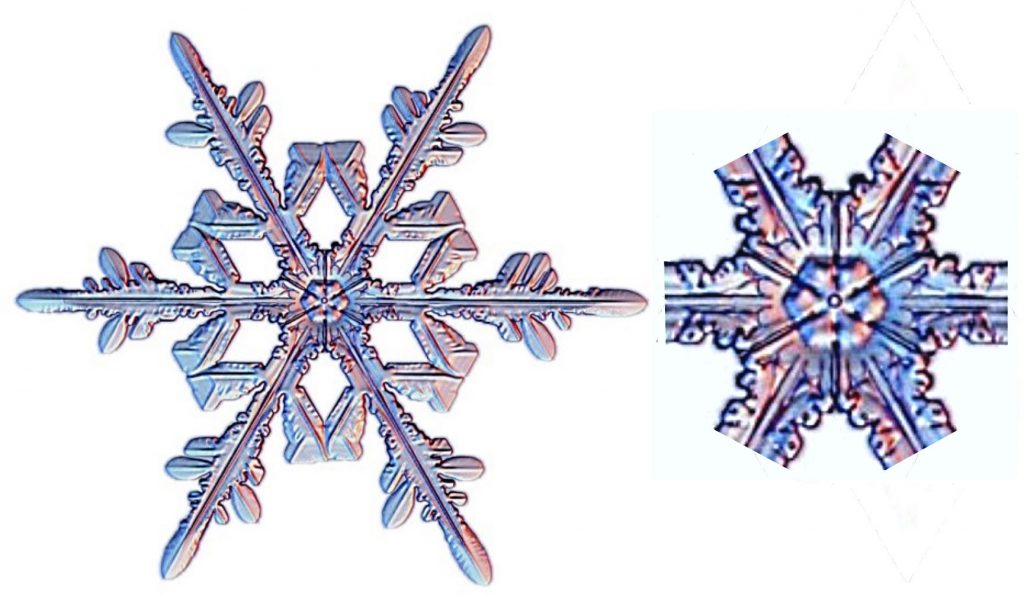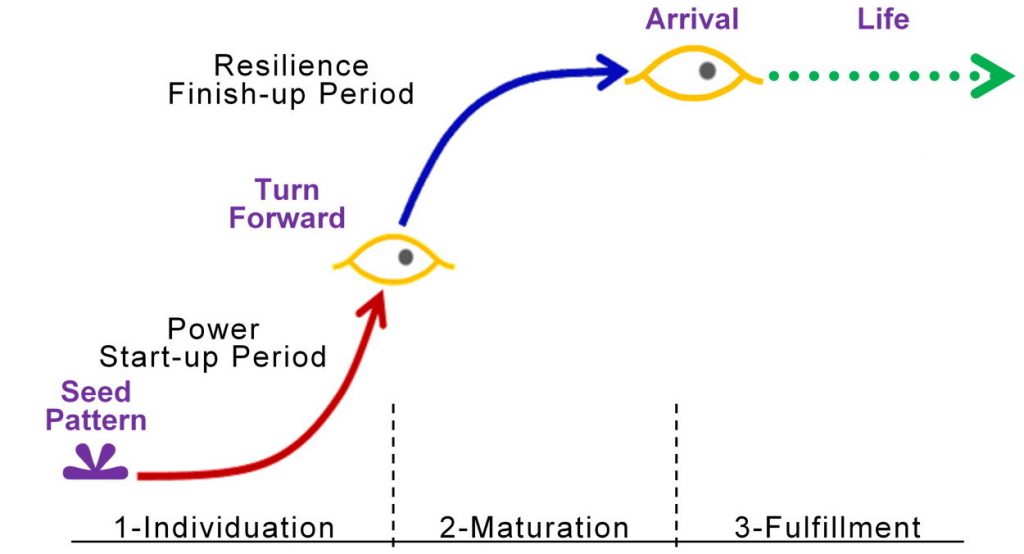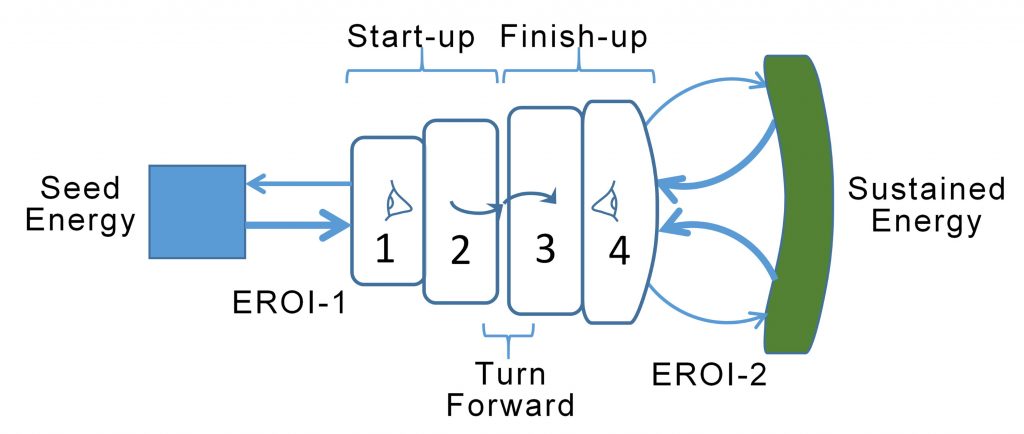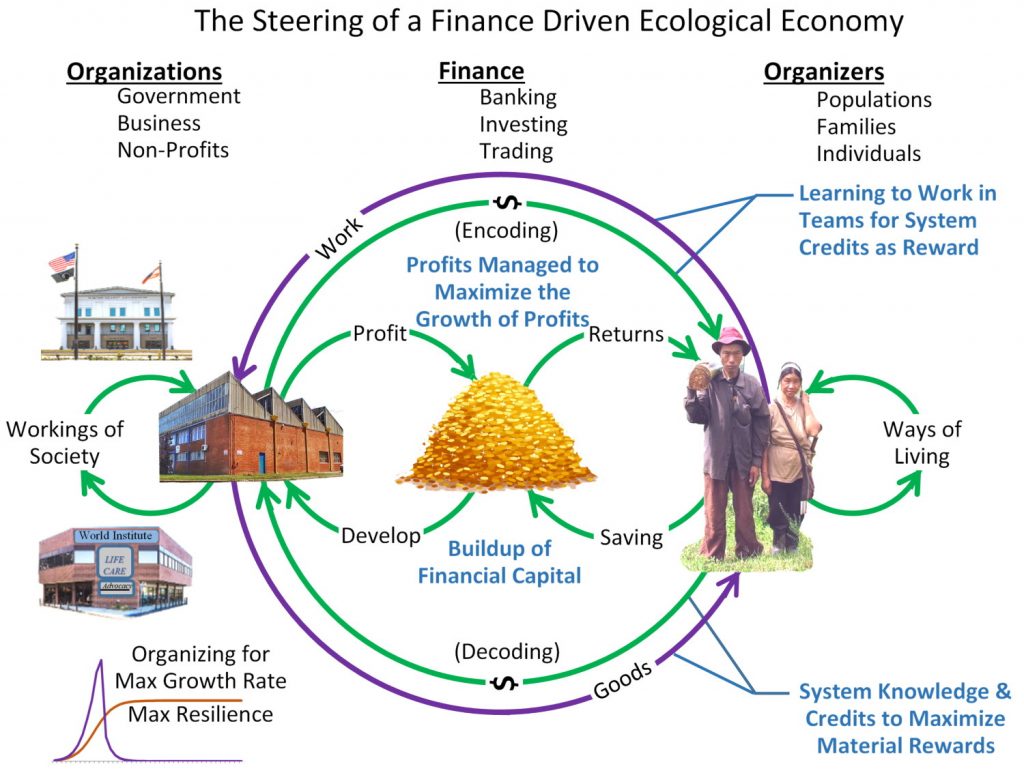This is a preview of my new submission to Ecological Economics
Please have a look at and comment on the review copy FYI
Some of the figures and captions are below
Jessie Henshaw sy@synapse9.com
<<<<<<<<<<<<<>>>>>>>>>>>>
Abstract: Organized human and natural systems generally develop by an observable process of growth, with a beginning, middle, and end. Examples range from the growth of organisms, cultures, and ecologies to that of businesses, social movements, weather systems, even personal and social relationships, and many more. Close observation reveals organizational growth to be a progressive building process of self-organization. Most recognizable are its recurring three shifts in direction, each followed by a development period. That six-stage pattern can guide the study of a growth system’s internal and external designs, recognizable as a series of milestones along an “S” curve assembly line. That common model allows useful comparison of all kinds of natural and human-designed growth systems, using a diagnostic as opposed to a deterministic research method, keeping what “ought to be” in close association with “what is.” Discussed are the historical roots of the field, a set of pattern recognition tools, three brief pedagogical case studies, and an eco-economy view of our global growth and its natural time to turn.
<<<<<<<<<<<<<>>>>>>>>>>>>
![]() ow living systems develop their complex organizational designs by rapidly evolving self-guided growth processes has fascinated scientific observers for millennia. Natural growth also still resists scientific definition though. Perhaps the delay comes from scientists asking the wrong questions, looking for deterministic rules for nature’s creative processes, rather than generative patterns of natural design.
ow living systems develop their complex organizational designs by rapidly evolving self-guided growth processes has fascinated scientific observers for millennia. Natural growth also still resists scientific definition though. Perhaps the delay comes from scientists asking the wrong questions, looking for deterministic rules for nature’s creative processes, rather than generative patterns of natural design.
Here we start from the broadest patterns, like how growth processes are evident throughout nature, even in every kind of work people do. Growth generally displays a three-part development cycle of beginning, middle, and end, but like a tree expands on opportunistic rather than deterministic pathways. Our problem with understanding it, then, might come from having so singularly studied nature for the deterministic patterns we can rely on, pushing aside the study of nature’s indeterminate building processes.
Another commonality is that whether it’s the growth of a mammal, a business, or a snowflake, the ultimate end is a state of complex perfection of design. On close inspection, that highly organized end-state seems to come from having alternating periods of diverging then converging (positive and negative) development feedback, first getting growth to start-up to then turn to perfect the design as growth finishes-up, as if generating a framework then filling it in.


1) the seed event, Image, and following start-up growth period (red) – Individuation
2) the turn forward event, Image, and finish-up growth period (blue) – Maturation
3) the arrival event, Image, and Climax life period (green) – Fulfillment


Every economy is also an ecology, both a self-organizing system of mutual benefits which also relies on having positive net resource flows; both beneficial design and net material profits. Together these two faces of natural systems make a complex whole one can study from many points of view, but rely critically on all its parts.
Networks of mutual benefits are mostly composed of organizational, design, and qualitative relations, like that a cup holds water, or that a fish swims, or whether someone knows how to work with you, or whether a shop serves its local culture. Those aspects of design, organization, and qualities have no numerical definition but create the systems of mutual relations on which the designs of life rely, Some may be products of nature and others of fine arts and crafts: a fine meal, a delightful garment, or a meaningful film as inherent benefits of life.
Those benefits of life are also needed for the systems that deliver the physical resource flows that market price and investment returns determine the investment in, letting one calculate the budgets by which our world economy is managed. So to understand any particular living system, one needs a clear-headed understanding of how those two sides work together.
JLH
